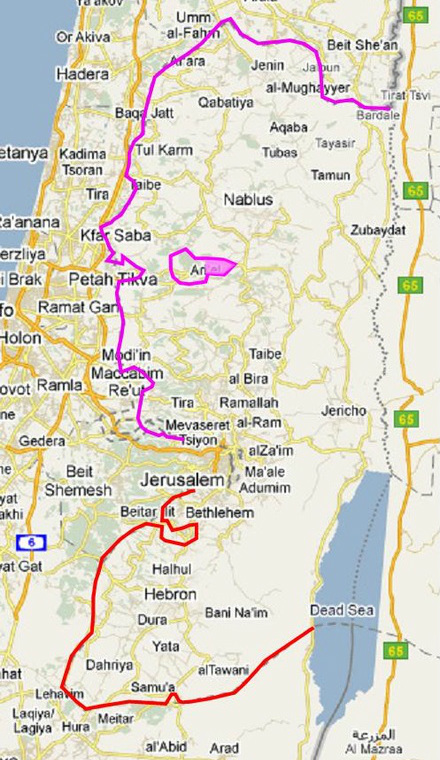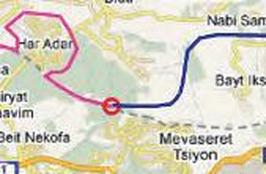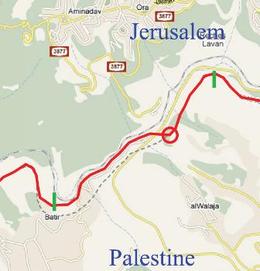- Home
- About
- General Issues
- Maps
-
Position Statements
- 2011 >
-
2012
>
- Time to Negotiate the Northern and Southern Sectors of the Israeli-West Bank Border
- President Peres and Dr. Ashrawi: Thank You for Staying on Track
- Playing the Victim Card Will Not Bring Peace
- Negotiations By the Parties
- The World Should Help the Palestinian Hunger Striker
- ...and only afterwards move to discuss the topic of Jerusalem
- A Question of Accountability
- Israel Twisting in the Wind
- Netanyahu: Too Big for His Britches
- Netanyahu's "Israeli Comfort"
- How Shaul Mofaz Can Jump-Start the Peace Process
- Netanyahu on the Brink
- Time for Taking Stock
- Israel in Wonderland
- Whatever Happened to the Quartet?
- The Palestinians Want to Negotiate
- A Time for Hope and a Call for Restraint
- Israel Can Win in Gaza, But Not Now
- Congratulations to the New State of Palestine!
- Security and Borders: Both Required for Peace
-
2013
>
- It Is Up to Israel to Restart Peace Negotiations
- Israel and Palestine: Changing the Terms of Agreement
- The Knesset Bill to Increase the Number of Women that Elect the Chief Rabbis Is Important for Jewish Women
- Proposal on Governance of the Holy Basin
- Time for Netanyahu to Reach Across the Aisle
- Tzipi Livni's Challenge
- Women Should Be Free to Pray at the Wailing Wall
- Proposed Highway through the Jordan Valley Will Backfire on Israel
- 2014 >
-
2015
>
- We Should Applaud Herzog and Livni for Reclaiming Zionism
- The Next Israeli Government
- West Bank Citizenry and Receipt of Individuals of Palestinian Origin
- What Next for Israel?
- Palestinian statehood
- Mischief in the Trade Legislation would Hinder Progress
- What Next for America?
- Could American Firms Choose to Gradually Disinvest from Israel?
- Boycotting Israel is not anti-Semitism
- 2016 >
- 2017 >
- 2019 >
- 2020 >
- 2023 >
- 2024
- Resources
- About the Authors
Next Steps: Negotiating an Initial Border
October 18, 2011
The Citizens Proposal recognizes that for negotiations to be successful, the main focus of discussion should be on Jerusalem. Jerusalem is certainly the most difficult issue to resolve, and will no doubt require difficult compromises for both Palestinians and Israelis.
In past efforts at negotiating a settlement, such as at Camp David in 2000 and at Taba in 2001, progress was made on the wider border issues, such as negotiating what percentage of land within the 1967 lines would be swapped for land within Israel. However, the issue of sovereignty over neighborhoods in Jerusalem proved more intractable. It makes sense, therefore, that the other, less contentious parts of the border should be dealt with first, before the two sides get down to a substantive discussion on the borders of Jerusalem.
We therefore propose a staged process, in two installments. It is designed to keep negotiations on track, enabling a complete resolution of all issues.
First Border Installment:
Decide the Borders to the North and to the South of Jerusalem and Resolve Security Issues
The Citizens Proposal recognizes that for negotiations to be successful, the main focus of discussion should be on Jerusalem. Jerusalem is certainly the most difficult issue to resolve, and will no doubt require difficult compromises for both Palestinians and Israelis.
In past efforts at negotiating a settlement, such as at Camp David in 2000 and at Taba in 2001, progress was made on the wider border issues, such as negotiating what percentage of land within the 1967 lines would be swapped for land within Israel. However, the issue of sovereignty over neighborhoods in Jerusalem proved more intractable. It makes sense, therefore, that the other, less contentious parts of the border should be dealt with first, before the two sides get down to a substantive discussion on the borders of Jerusalem.
We therefore propose a staged process, in two installments. It is designed to keep negotiations on track, enabling a complete resolution of all issues.
First Border Installment:
Decide the Borders to the North and to the South of Jerusalem and Resolve Security Issues
First Installment: Border Segments North and South of Jerusalem
_In the First Installment, negotiations could determine the border
sections to the north and south of Jerusalem. For the border of the
northern West Bank, we suggest a southern terminus on the 1967 line
north of Mevaseret Tzion and its northern terminus where the 1967 line
meets the Jordan River. For the border of the southern West Bank we have
designated a northern terminus on the 1967 line between Batir and
al-Walaja and its southern terminus where the 1967 line meets the Dead
Sea. (The terminus points near Jerusalem are indicated on the maps below
by red circles.)
_
The border section of the southern West Bank terminates in what the Citizens Proposal calls the “women’s border” in the area of Batir and al-Walaja. (The role of women in stabilizing and the southern border of Jerusalem, with its considerable traffic between Jerusalem and Bethlehem, is an important feature of the Citizens Proposal.)
For these sections north and south, the borders depicted in the Citizens Proposal would be an appropriate resolution that would serve the interests of Israelis and Palestinians alike, and we urge the negotiators to consider adopting them as a fixed border.
However, our proposed border does not preclude territorial exchanges to compensate Palestine for land east of the 1967 line that is given to Israel; territory under consideration for exchange could be adjacent to Gaza or on the western side of the 1967 line or both. In this First Installment, Israeli and Palestinian negotiators could also come to a resolution on security issues.
This First Installment could be completed quickly through straightforward negotiations, as the issues are well known.
Second Border Installment:
Determine the Borders of Jerusalem and the Rights of Israeli Citizens in Palestine
With agreement on the First Installment, the issues of Jerusalem and settlements can be addressed. However, the border drawn in the First Installment will have already clarified the fate of many of the settlements as lying either within Israel or within Palestine. What remains to be discussed, and what will be a point of concern for Israel, is the rights and status of Israeli citizens or former citizens who might wish to remain in their homes within the State of Palestine. They will want legal protections, property rights, assurances of unrestricted access by road to Israel, and the right to live in peace and security. They will demand freedom of religion. They will also want political rights, either as a minority in Palestine or as dual citizens with a vote in Israeli elections.
Moreover, the city of Ariel, which the Citizens Proposal places in an Autonomous Economic Zone, would need specific guarantees of rights and privileges, as well as a mechanism to manage the Zone’s joint governance, so it could become a model community for joint economic development. The large community of Ma’ale Adumim, which depending on negotiations may either fall within Palestine or become an island enclave, would need specific guarantees as to property rights and/or road access.
In return for Palestinian guarantees for the rights of Israelis remaining in Ariel, Ma’ale Adumim, and as a settled minority within Palestine, Israel might be willing to concede many of the Arab neighborhoods of East Jerusalem to Palestine. Linking these two issues may facilitate more balanced negotiations over Jerusalem, with dignity and benefits to both sides.
It is in both sides’ best interests to encourage a flourishing Jewish minority in Palestine, because this will require the dislocation of the fewest people. The assumption of some proposals that most or all Israeli settlers will resettle in Israel rather than live in Palestine places a heavy burden on both sides. It increases the reluctance of Israel to part with settlements and makes it likely that it will demand more land from Palestine in order to preserve them. The Citizens Proposal provides Palestine with a contiguous state, with few Israeli incursions, because it operates from the assumption that Palestine will welcome Israelis to remain in their communities and help enrich Palestine’s economic and social life. Hence, the focus of the Second Installment is not to preserve settlements but to protect the rights of people.
To summarize, we propose that negotiations for a final settlement of the Israel-Palestine border may be expedited if they are undertaken in two installments: The First Installment is to negotiate an initial border for sections of the West Bank north and south of Jerusalem from the terminus points marked above to the Jordan River and the Dead Sea, respectively. The Second Installment is to negotiate in tandem the status of Jerusalem and the rights of settled Israelis who choose to remain in Palestine.
The border section of the southern West Bank terminates in what the Citizens Proposal calls the “women’s border” in the area of Batir and al-Walaja. (The role of women in stabilizing and the southern border of Jerusalem, with its considerable traffic between Jerusalem and Bethlehem, is an important feature of the Citizens Proposal.)
For these sections north and south, the borders depicted in the Citizens Proposal would be an appropriate resolution that would serve the interests of Israelis and Palestinians alike, and we urge the negotiators to consider adopting them as a fixed border.
However, our proposed border does not preclude territorial exchanges to compensate Palestine for land east of the 1967 line that is given to Israel; territory under consideration for exchange could be adjacent to Gaza or on the western side of the 1967 line or both. In this First Installment, Israeli and Palestinian negotiators could also come to a resolution on security issues.
This First Installment could be completed quickly through straightforward negotiations, as the issues are well known.
Second Border Installment:
Determine the Borders of Jerusalem and the Rights of Israeli Citizens in Palestine
With agreement on the First Installment, the issues of Jerusalem and settlements can be addressed. However, the border drawn in the First Installment will have already clarified the fate of many of the settlements as lying either within Israel or within Palestine. What remains to be discussed, and what will be a point of concern for Israel, is the rights and status of Israeli citizens or former citizens who might wish to remain in their homes within the State of Palestine. They will want legal protections, property rights, assurances of unrestricted access by road to Israel, and the right to live in peace and security. They will demand freedom of religion. They will also want political rights, either as a minority in Palestine or as dual citizens with a vote in Israeli elections.
Moreover, the city of Ariel, which the Citizens Proposal places in an Autonomous Economic Zone, would need specific guarantees of rights and privileges, as well as a mechanism to manage the Zone’s joint governance, so it could become a model community for joint economic development. The large community of Ma’ale Adumim, which depending on negotiations may either fall within Palestine or become an island enclave, would need specific guarantees as to property rights and/or road access.
In return for Palestinian guarantees for the rights of Israelis remaining in Ariel, Ma’ale Adumim, and as a settled minority within Palestine, Israel might be willing to concede many of the Arab neighborhoods of East Jerusalem to Palestine. Linking these two issues may facilitate more balanced negotiations over Jerusalem, with dignity and benefits to both sides.
It is in both sides’ best interests to encourage a flourishing Jewish minority in Palestine, because this will require the dislocation of the fewest people. The assumption of some proposals that most or all Israeli settlers will resettle in Israel rather than live in Palestine places a heavy burden on both sides. It increases the reluctance of Israel to part with settlements and makes it likely that it will demand more land from Palestine in order to preserve them. The Citizens Proposal provides Palestine with a contiguous state, with few Israeli incursions, because it operates from the assumption that Palestine will welcome Israelis to remain in their communities and help enrich Palestine’s economic and social life. Hence, the focus of the Second Installment is not to preserve settlements but to protect the rights of people.
To summarize, we propose that negotiations for a final settlement of the Israel-Palestine border may be expedited if they are undertaken in two installments: The First Installment is to negotiate an initial border for sections of the West Bank north and south of Jerusalem from the terminus points marked above to the Jordan River and the Dead Sea, respectively. The Second Installment is to negotiate in tandem the status of Jerusalem and the rights of settled Israelis who choose to remain in Palestine.



